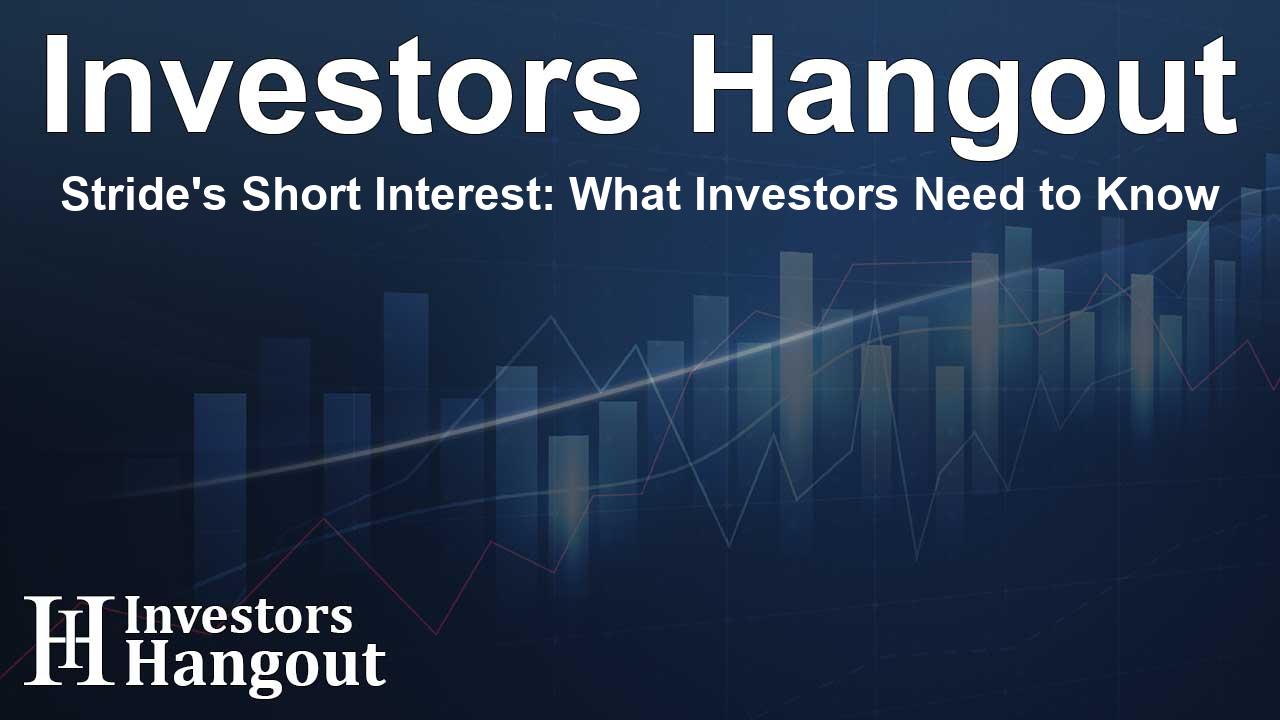Stride's Short Interest: What Investors Need to Know

Understanding Stride's Short Interest Dynamics
Stride Inc (NYSE: LRN) has recently shown a notable movement in its short interest, with a decrease of 11.67% reported since the last analysis. Currently, Stride has approximately 4.74 million shares sold short, representing 15.37% of the total shares available for trading. This statistic highlights a significant aspect of investor behavior towards the stock, indicating a shift in market sentiment.
The Importance of Short Interest
Short interest refers to the total number of shares that investors have sold short but have not yet repurchased. This trading strategy is based on the anticipation of declining stock prices. When traders engage in short selling, they aim to benefit from a decrease in the stock price, leading to profits if their predictions come true.
Monitoring short interest is crucial as it can serve as a barometer of market sentiment toward a specific stock. A rise in short interest may suggest that investors are becoming more pessimistic, while a decline could indicate growing confidence and a bullish outlook.
Analyzing Stride's Short Interest Trends
In reviewing the short interest statistics, it is essential to recognize that while the reduction in short interest might not guarantee an immediate price increase, it does suggest that fewer traders are betting against the stock. This potential shift could be critical for those evaluating Stride as an investment opportunity.
Peer Comparison: Where Does Stride Stand?
Performance comparisons among peers can provide invaluable insights into a company's market position. When looking at Stride's short interest relative to its peers, it's noteworthy that the average short interest for its peer group is recorded at 4.08%. This indicates that Stride Inc currently maintains a higher short interest compared to many of its competitors, highlighting unique market dynamics at play.
Bearish or Bullish? The Implications of Short Interest
Interestingly, an increase in short interest can also have bullish implications under certain market conditions. Increased short selling could indicate expectations of a price drop, but it can create opportunities for price rebounds, particularly if short sellers are forced to buy back shares to cover their positions. This event can lead to what's known as a short squeeze, which could potentially drive the stock price higher.
Factors Influencing Stride's Market Behavior
Several factors may influence trends in Stride's short interest. These can include broader market conditions, changes in investor perception, and specific developments within the company. Stride's performance in earnings reports, strategic initiatives, and industry developments can significantly impact investor sentiment.
Key Takeaways for Investors
For investors, understanding short interest is just one piece of the puzzle. It is imperative to consider various market signals and analyses, including company performance metrics and external economic factors. Properly interpreting these dynamics can aid in making informed investment decisions.
Frequently Asked Questions
What does short interest represent in the market?
Short interest indicates the number of shares sold short but not yet repurchased, serving as a gauge of market sentiment towards a stock.
How can short interest be an indicator of market sentiment?
A rise in short interest often suggests increased bearish sentiment, while a decline can indicate growing optimism among investors.
What factors can affect a company's short interest?
Changes in stock prices, market conditions, investor sentiment, and company-specific developments can all impact short interest levels.
Can high short interest be beneficial for investors?
Yes, high short interest can lead to short squeezes, potentially resulting in significant gains for investors if prices rebound.
Why is Stride's short interest higher than its peers?
Stride’s market dynamics, investor perception, and specific trading patterns contribute to its higher short interest compared to industry peers.
About The Author
Contact Caleb Price privately here. Or send an email with ATTN: Caleb Price as the subject to contact@investorshangout.com.
About Investors Hangout
Investors Hangout is a leading online stock forum for financial discussion and learning, offering a wide range of free tools and resources. It draws in traders of all levels, who exchange market knowledge, investigate trading tactics, and keep an eye on industry developments in real time. Featuring financial articles, stock message boards, quotes, charts, company profiles, and live news updates. Through cooperative learning and a wealth of informational resources, it helps users from novices creating their first portfolios to experts honing their techniques. Join Investors Hangout today: https://investorshangout.com/
The content of this article is based on factual, publicly available information and does not represent legal, financial, or investment advice. Investors Hangout does not offer financial advice, and the author is not a licensed financial advisor. Consult a qualified advisor before making any financial or investment decisions based on this article. This article should not be considered advice to purchase, sell, or hold any securities or other investments. If any of the material provided here is inaccurate, please contact us for corrections.
